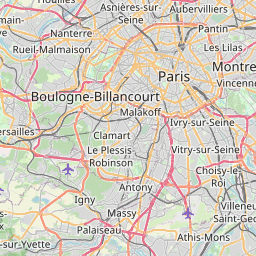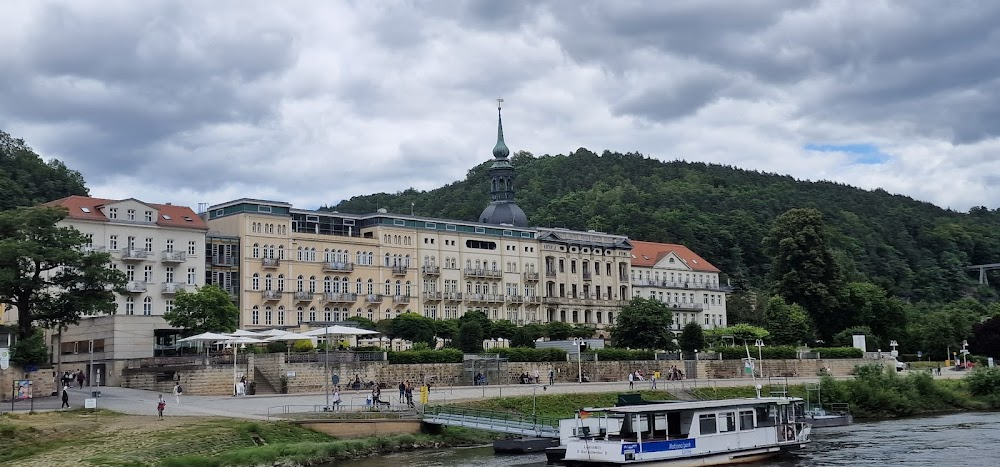Inglourious Basterds Filming Locations

Where was Inglourious Basterds filmed? Inglourious Basterds was filmed in 19 locations across France, Germany and Czech Republic in the following places:
Inglourious Basterds Filming Locations
Paris, France's capital, is a major European city and a global center for art, fashion, gastronomy and culture. Its 19th-century cityscape is crisscrossed by wide boulevards and the River Seine. Beyond such landmarks as the Eiffel Tower and the 12th-century, Gothic Notre-Dame cathedral, the city is known for its cafe culture and designer boutiques along the Rue du Faubourg Saint-Honoré.
Görlitz is a town in eastern Germany, on the Polish border. It’s known for its well-preserved old town, where buildings of different eras show off a wealth of architectural styles. St. Peter’s is a late-Gothic church, with 2 steeples and the early-18th-century Sun Organ. The early-Renaissance Schönhof and adjacent buildings are home to the Silesian Museum, displaying German, Polish and Czech art and history.
Rüdersdorf is a municipality in the district Märkisch-Oderland, in Brandenburg, Germany, near Berlin. It is served by the Schöneiche bei Berlin tramway which runs from Rüdersdorf through Schöneiche to Berlin-Friedrichshagen station on the Berlin S-Bahn network. Bundesautobahn 10 passes through the town.
Bad Schandau is a spa town in Germany, in the Sächsische Schweiz-Osterzgebirge district of Saxony. It is situated on the right bank of the Elbe, at the mouth of the valley of the Kirnitzsch and in the area often described as Saxon Switzerland.
The Elbe Sandstone Mountains, also called the Elbe Sandstone Highlands, are a mountain range straddling the border between the state of Saxony in southeastern Germany and the North Bohemian region of the Czech Republic, with about three-quarters of the area lying on the German side.
Nauen is a small town in the Havelland district, in Brandenburg, Germany. It is chiefly known for Nauen Transmitter Station, the world's oldest preserved radio transmitting installation.
Sebnitz is a town in the Sächsische Schweiz-Osterzgebirge district, in Saxony, Germany.
Home to Germany’s main Weimar-era film studio, leafy Babelsberg is now known for Filmpark Babelsberg, a movie-themed amusement park with recreations of famed German sets. The sprawling, rugged Babelsberg Park includes a turreted neo-Gothic castle, a mill, and several architectural follies. Residential Weberviertel is a historic district full of quaint, single-story, 18th-century weavers’ homes with painted shutters.
No image or map available for this location.
Germany is a Western European country with a landscape of forests, rivers, mountain ranges and North Sea beaches. It has over 2 millennia of history. Berlin, its capital, is home to art and nightlife scenes, the Brandenburg Gate and many sites relating to WWII. Munich is known for its Oktoberfest and beer halls, including the 16th-century Hofbräuhaus. Frankfurt, with its skyscrapers, houses the European Central Bank.
Potsdam is a city on the border of Berlin, Germany. Sanssouci Palace was once the summer home of Frederick the Great, former King of Prussia. On the grounds of the complex, the Renaissance Orangery Palace overlooks Italian-style gardens with fountains. Historic Mill offers city views. English gardens surround neoclassical Charlottenhof Palace. The 19th-century Roman Baths were built in several architectural styles.
Berlin, Germany’s capital, dates to the 13th century. Reminders of the city's turbulent 20th-century history include its Holocaust memorial and the Berlin Wall's graffitied remains. Divided during the Cold War, its 18th-century Brandenburg Gate has become a symbol of reunification. The city's also known for its art scene and modern landmarks like the gold-colored, swoop-roofed Berliner Philharmonie, built in 1963.
Brandenburg an der Havel is a German town west of Berlin. It’s known for its Gothic, red-brick buildings, including the 15th-century Old Town Hall. Close by, Brandenburg Cathedral has a chapel with a painted vault, a baroque organ and a museum displaying medieval textiles. The late-medieval St. Paul’s Monastery is home to the Archaeological Museum. Nearby are the ruins of the medieval town wall.
Saxony is a state in eastern Germany. It’s dotted with palaces and castles, some dating back to the Middle Ages. On the Elbe River, the capital city, Dresden, is known for historic buildings rebuilt after WWII. These include the Frauenkirche domed baroque church and the Versailles-inspired Zwinger complex, with gardens and a porcelain collection. Its Old Masters Picture Gallery includes Raphael’s “Sistine Madonna.”
France, in Western Europe, encompasses medieval cities, alpine villages and Mediterranean beaches. Paris, its capital, is famed for its fashion houses, classical art museums including the Louvre and monuments like the Eiffel Tower. The country is also renowned for its wines and sophisticated cuisine. Lascaux’s ancient cave drawings, Lyon’s Roman theater and the vast Palace of Versailles attest to its rich history.
Inglourious Basterds (2009)
In Nazi-occupied France during World War II, a plan to assassinate Nazi leaders by a group of Jewish U.S. soldiers coincides with a theatre owner's vengeful plans for the same.














